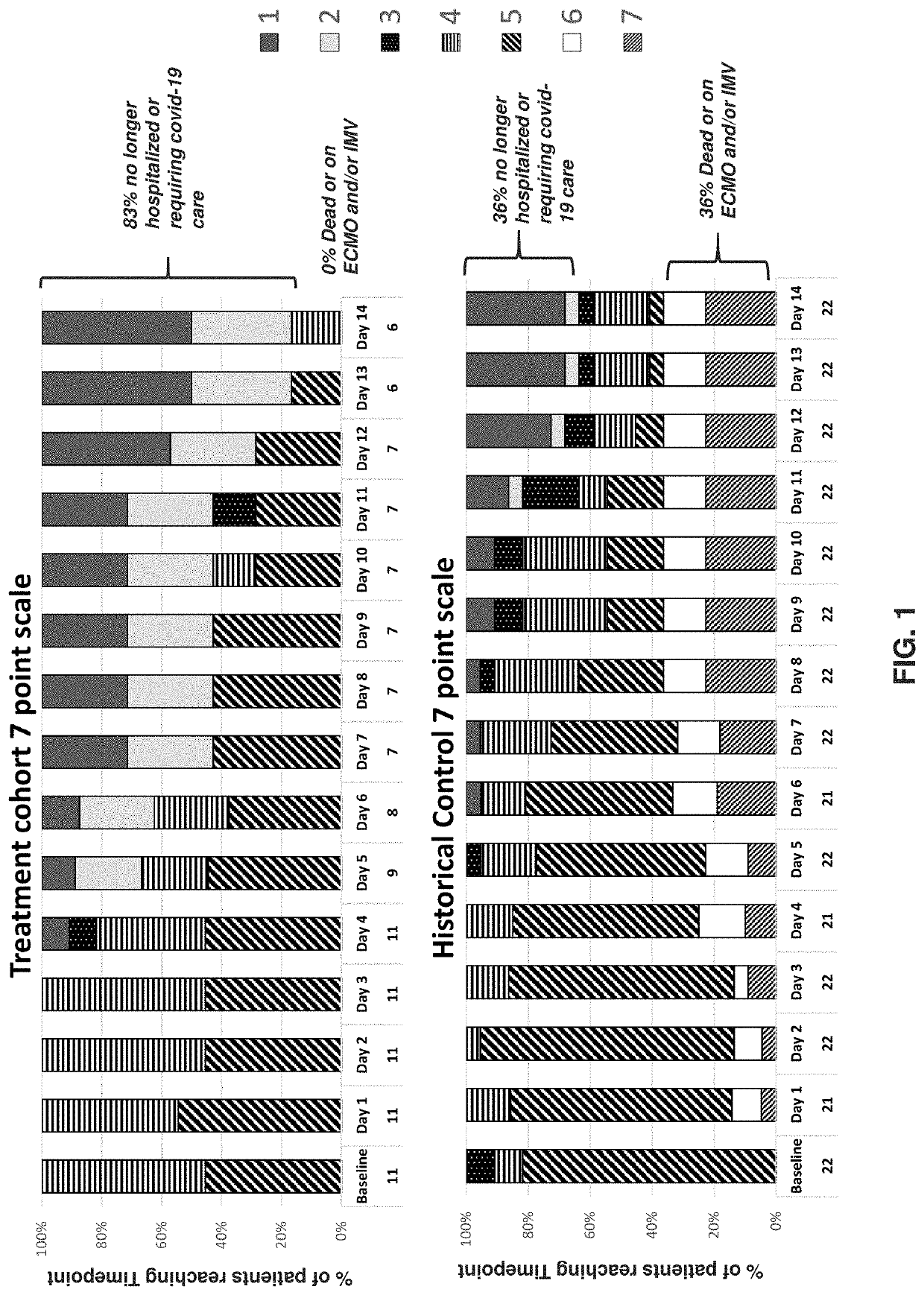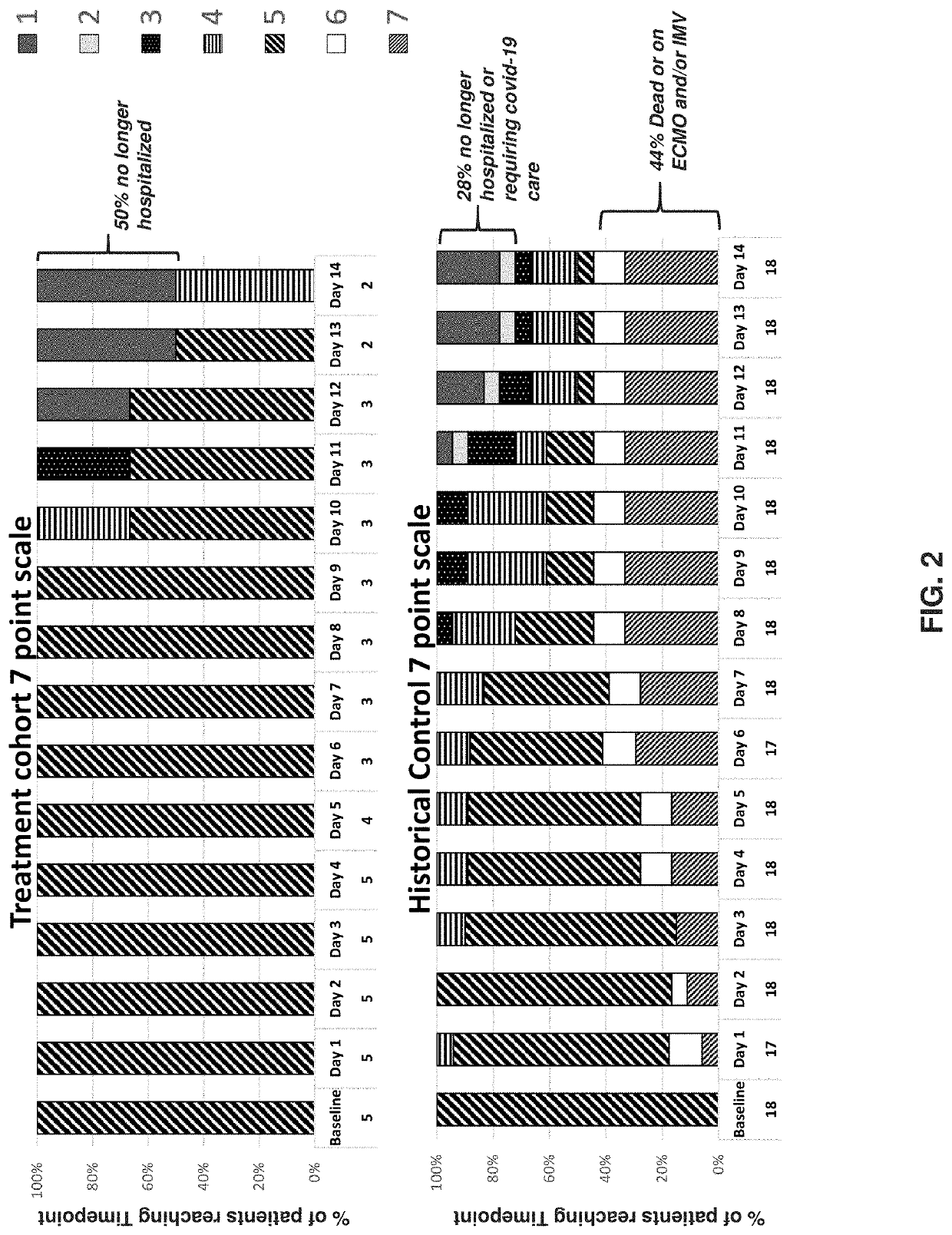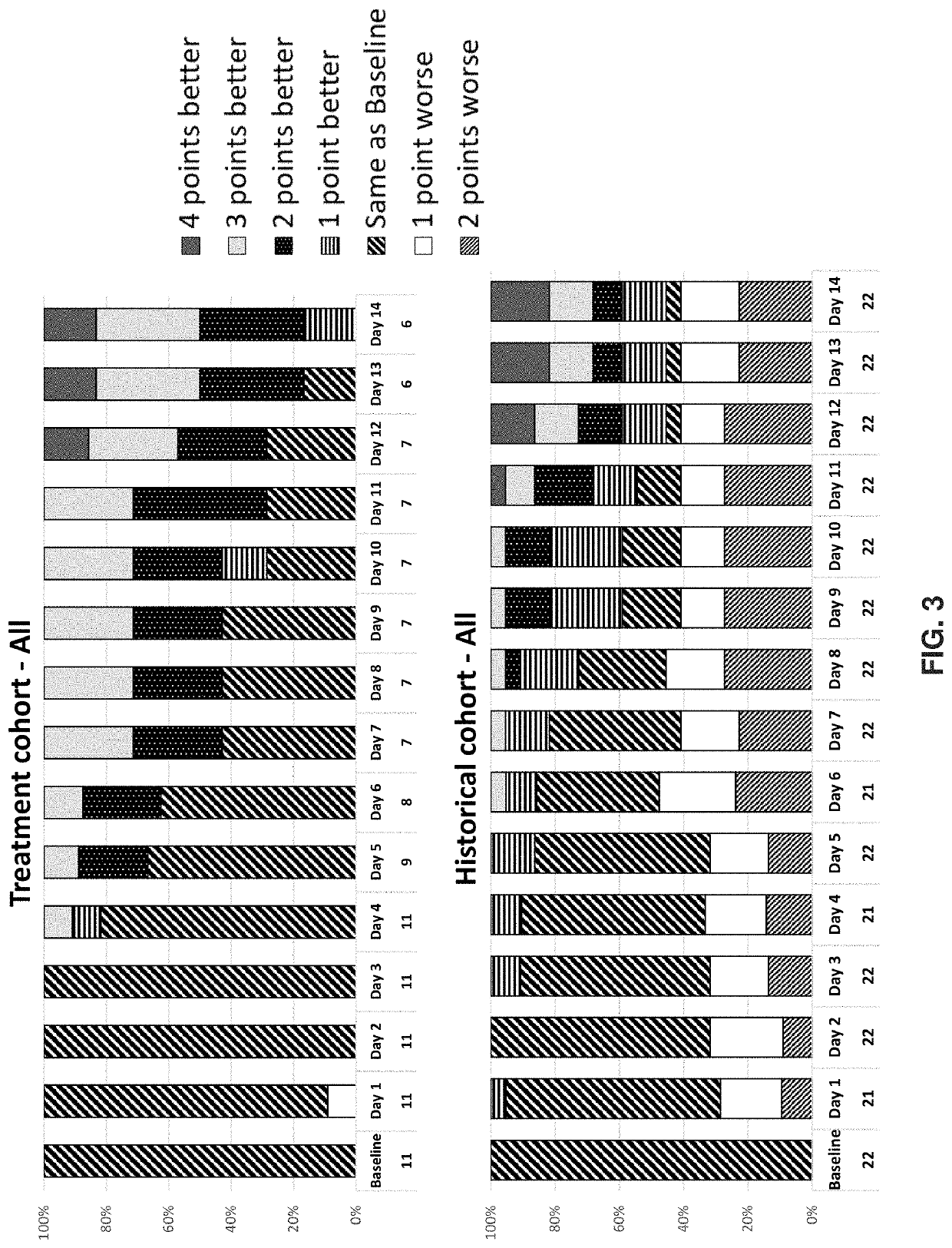Treatment of cytokine release syndrome with GM-CSF antagonists
a cytokine release syndrome and cytokine release technology, applied in the direction of respiratory disorders, immunoglobulins against cell receptors/antigens/surface determinants, organic active ingredients, etc., can solve the problems of severe outbreaks, damage to the membrane, fluid leakage of ards, etc., to reduce the quantity of mononuclear inflammatory lymphocytes, reduce the quantity of cytokine imbalance, and increase the quantity of anti-inflammatory cytokin
- Summary
- Abstract
- Description
- Claims
- Application Information
AI Technical Summary
Benefits of technology
Problems solved by technology
Method used
Image
Examples
example 1
of COVID-19 with an Anti-GM-CSFRα Antibody
[0256]The study in this example is a Phase II, interventional study to evaluate the efficacy, safety and tolerability of an anti-GM-CSFRα antibody in subjects with COVID-19. Non-mechanically ventilated patients suffering from severe pulmonary involvement of COVID-19, acute respiratory distress, fever and clinical and biological markers of systemic hyperinflammation status, were treated with a single-dose of anti-GM-CSFRα antibody. The objective was to reduce incidence of progression of acute respiratory failure, the need of mechanical ventilation, and the transfer to the intensive care unit.
[0257]The primary objective of this study was also to demonstrate that the early treatment with the anti-GM-CSFRα antibody administered intravenously in addition to the best available antiviral therapy with protease inhibitors and hydroxychloroquine is able to reduce the progression of acute respiratory failure, the need of mechanical ventilation and the ...
example 2
Study for the Treatment of COVID-19 with an Anti-GM-CSFRα Antibody
[0370]This example illustrates a Phase 2 / 3, randomized, double-blind, placebo-controlled study to evaluate the efficacy and safety of anti-GM-CSFRα antibody treatment in adult subjects hospitalized with severe COVID-19 pneumonia and hyper-inflammation.
[0371]In this study, patients with severe COVID-19 pneumonia for evidence of hyper-inflammation status as demonstrated by elevated levels of one or more biomarkers (e.g., C-reactive protein and Lactate Dehydrogenase [LDH] as well as increased IL-6, ferritin, D-dimer, or erythrocyte sedimentation rate) are screened to identify the subgroup of patients for whom targeted immunomodulation could prevent worsening of pulmonary status, including the need for ventilatory support, with the aim ultimately to improve mortality and to reduce the need for ventilatory support (i.e., prevent progression to invasive ventilation or death, and / or reduce days on ventilation for recently-ve...
example 3
tor-Initialed Study of Anti-GM-CSFRα Antibody in Severe COVID-10 Pneumonia and Hyperinflammation
[0528]This example illustrates an investigator-imitated study to evaluate the efficacy and safety of an anti-GM-CSFRα antibody versus placebo on top of standard of care therapy in patients with severe COVID-19 pneumonia and hyperinflammation.
[0529]The study was a randomized, double-blind, placebo-controlled study, and enrolled 40 patients with severe COVID-19 pneumonia (all patients presented with pneumonia and hypoxia: all patients required supplemental oxygen, 50% of patients required non-invasive ventilation, none required mechanical ventilation at baseline; median PaO2 / FiO2 ratio 137) and hyperinflammation [median C-reactive protein 13.1 mg / dL). Concomitant medications at baseline included corticosteroids (65% of patients) and remdesivir (75% of patients). Patients were randomized 1:1 to a single intravenous (IV) infusion of anti-GM-CSFRα antibody 6 mg / kg (n=21) or placebo (n=19) and ...
PUM
| Property | Measurement | Unit |
|---|---|---|
| concentration | aaaaa | aaaaa |
| concentration | aaaaa | aaaaa |
| concentration | aaaaa | aaaaa |
Abstract
Description
Claims
Application Information
 Login to View More
Login to View More - R&D
- Intellectual Property
- Life Sciences
- Materials
- Tech Scout
- Unparalleled Data Quality
- Higher Quality Content
- 60% Fewer Hallucinations
Browse by: Latest US Patents, China's latest patents, Technical Efficacy Thesaurus, Application Domain, Technology Topic, Popular Technical Reports.
© 2025 PatSnap. All rights reserved.Legal|Privacy policy|Modern Slavery Act Transparency Statement|Sitemap|About US| Contact US: help@patsnap.com



